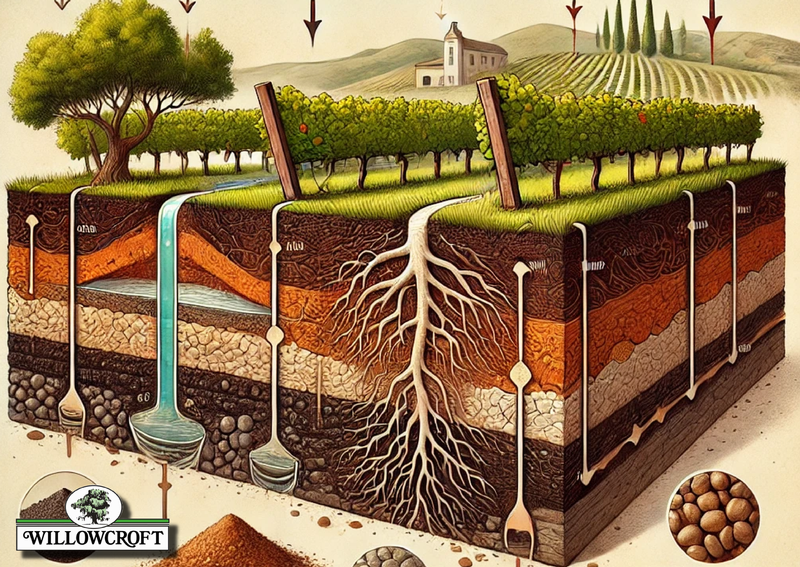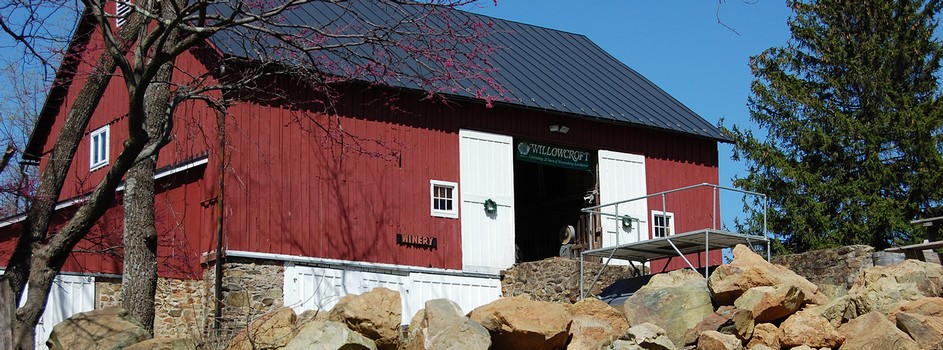The Terroir Connection: How Soil Shapes the Flavor and Quality of Wine
 The soil in which grapevines grow plays a crucial role in winemaking, influencing everything from water management to the flavors in the final product. Understanding soil characteristics can help vintners decide to cultivate healthy vines and produce quality wines.
The soil in which grapevines grow plays a crucial role in winemaking, influencing everything from water management to the flavors in the final product. Understanding soil characteristics can help vintners decide to cultivate healthy vines and produce quality wines.
Particle Size, Drainage, and Water Retention
Soil texture—defined by the proportion of sand, silt, and clay—affects water drainage and retention, which are vital for vine health. Sandy soils have larger particles and larger pore spaces, allowing for quick drainage but limited water retention. Conversely, clay soils consist of smaller particles and smaller pore spaces, leading to slower drainage and higher water retention. Loam soils, which are a balanced mix of sand, silt, and clay, offer moderate drainage and water-holding capacity, often considered ideal for viticulture. The right balance ensures that vine roots receive adequate moisture without becoming waterlogged, promoting deep root growth and resilience.
Soil Color, Sun Reflection, and Heat Absorption
The color of soil can influence its temperature by affecting how it absorbs and reflects sunlight. Darker soils tend to absorb more heat, which can be beneficial in cooler climates by promoting earlier ripening of grapes. Lighter-colored soils, such as those rich in limestone or chalk, reflect more sunlight, potentially keeping the soil cooler and delaying ripening. This reflection can also enhance light exposure to the grape clusters, aiding in photosynthesis. Managing soil temperature through color and composition helps vintners control the ripening process and grape development.
Soil Composition and Flavor Influence
Beyond texture and color, the mineral composition of soil can subtly influence the flavor profile of wines. For instance, calcareous soils, which are rich in calcium carbonate, are known to retain water effectively and can impart a certain acidity to the grapes, contributing to a wine's freshness. Clay soils, with their excellent water retention, can produce bold and structured wines, making them suitable for varieties like Merlot and Sangiovese. While the direct impact of soil minerals on wine flavor is complex and not fully understood, the interplay between soil composition, water availability, and vine health undeniably shapes the characteristics of the wine.
In summary, a deep understanding of soil properties—including particle size, color, and composition—enables winemakers to optimize vine health and influence the sensory qualities of their wines.

